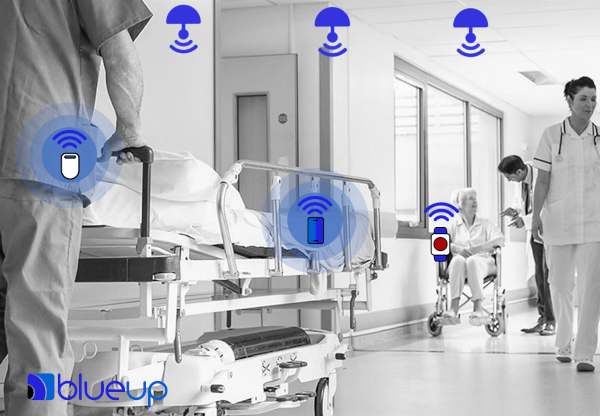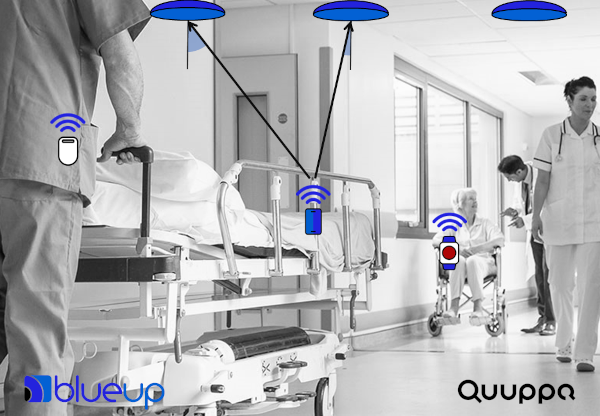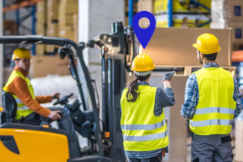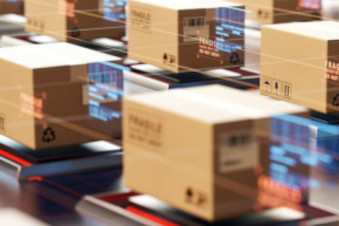Introduction
The theme of corporate waste is now very much felt by companies, both small and medium-sized and large ones.
The attention to reducing waste in the business environment began to have great importance especially starting
from the 1950s with the introduction of the Toyota Production System.
Toyota Production System is a system developed by the Japanese company Toyota and is based on the
Japanese philosophy of kaizen, or continuous improvement, and on the use of lean and flexible production techniques.
The main characteristics of the Toyota Production System are:
1. Lean production: this system is based on eliminating waste and
optimizing the production flow, in order to reduce production times and costs.
2. Flexibility: involves the ability to quickly adapt to market needs, producing what the
customer requires and avoiding the production of excess inventory.
3. Quality control: provides for the involvement of workers in quality management, through
participation in continuous improvement processes.
4. Just in time: provides for the production of components and products only when they are
requested by the customer, avoiding the accumulation of inventory.
The Toyota Production System was a revolutionary production system, which allowed Toyota to become one of the leading auto manufacturers in the world. Its success has led many other companies to imitate the model, giving rise to the phenomenon of lean production.
Why focus on the Toyota model if in this article we aim to talk about health
care? The answer is simple: this model is applicable to all types of companies, including healthcare companies!
Furthermore, it should be considered that, compared to the 1950s, technology has developed exponentially, and now
there are many tools that did not exist before to make production even more efficient,
flexible and lean.
Asset losses in hospital
It has been observed by various studies that in the health sector the most significant
losses can be attributed to the loss of assets. In hospitals, most of the assets are made up of very expensive
machinery or tools, so losing them, or even simply leaving them unused, results in costly waste. A study conducted
by Gartner estimated that each year, between 10% to 20% of hospital asset inventory is misallocated or even lost. In the worst cases this causes a loss of up to 5,000 USD/year per single bed.
Another frequent waste that should not be underestimated derives from the consumption of the structure. Being able
to monitor energy consumption in real-time also means being able to reduce it.
Again, to bring waste near-to-zero, hospitals would need to optimize the management of buildings, so as to be able
to accommodate as many patients as possible.
Another factor to consider, even if not properly definable as waste, but rather as inefficiency (which then naturally
becomes a waste) are all those cases in which, faced with an emergency, it is not possible to find operators or
beds/machines available to intervene promptly.
It is worth noting that in a context such as the healthcare one, in which the patient's health is the main objective,
process management cannot be separated from a constant improvement of the level of patient safety and of the care processes.
For all these reasons, traceability becomes essential to guarantee quality in the provision of the service and the reduction
of the probability of error.
Today, all these problems can be solved thanks to the possibilities offered to us by technology.
RTLS systems for increasing productivity
The first step to reduce losses and increase productivity is to implement RTLS
(Real-Time Location System). To implement
this type of system there are different technologies, and among these one of the most
used is the Bluetooth LE standard (or compatible wireless protocols), thanks to its
pervasiveness, reduced energy consumption and low cost.
RTLS that are based on Bluetooth® LE technology consist of three main components: tags,
antennas, and software. The first component is the set of mobile tags that must be positioned
on the assets to be tracked (electromedical devices, such as electrocardiographs, ultrasounds
and probes, syringe pumps, defibrillators, electrosurgical units, external pacemakers, trolleys
for computerized electronic records, etc...) or to be worn by people (operators, patients, visitors).
Tags are active battery-operated devices which, at certain intervals (the setting of which depends on
tracking needs), send a signal.
The second component consists of the antennas, which are fixed devices and require wiring
(unlike tags which are mobile and battery operated). The latter are positioned on the ceiling,
and receive the signals from the tags.
Finally, the last component is the management software, which receives the information arriving
at the antennas and processes them thanks to an algorithm, then going on to provide the position data
on a digital map.
Another valid technology, compatible with Bluetooth® LE, to build an indoor tracking system is the 2.4GHz Mesh technology. The latter has proved to be the most functional for applications in the healthcare sector. In this case the infrastructure is much simpler, more flexible, cheaper, and suitable for retrofit applications. This solution involves the use of all devices, including the antennas (which in this case will be called gateways), battery-operated and which do not require any wiring.
The advantages of tracking in the hospital setting
Tracking assets and people, as anticipated, reduces waste, for various reasons.
Specifically, asset tracking in the healthcare sector leads to numerous advantages, such as:
• Loss reduction
• Monitor and optimize the use of medical resources and devices
• Reduced search time for vital equipment
• Tracking of beds and wheelchairs
• Automatic inventory
• Reduction of intervention times
• Internal process monitoring
• Control of unauthorized exits
• Efficiency of maintenance
Monitoring operators and patients leads to further advantages:
• Panic button for localized alarm
• Monitoring of the lone worker
• Increased safety of doctors and nurses
• Monitoring of patient movements
• Detection of falls from bed or other accidental events
• Monitoring of unauthorized exits to patients
• Tracking of patients going to the operating room or outpatient clinic
The application of IoT solutions is essential in order to guarantee high levels of safety, error prevention and waste reduction. As highlighted by a study, conducted by Aruba Networks, healthcare facilities that rely on IoT solutions can increase their operational efficiency by 50-60%.
A successful application case: Tuscan Surgical Center
Thanks to the ATLAS Project, a tracking system based on mesh technology was tested at the Tuscan Surgical Center. This system solves numerous problems in the hospital environment:
• localization of the positions of patients and employees within the hospital
• control of entrances and exits in the building and on the various floors
• localization of assets (e.g. ultrasounds, defibrillators) for the optimization of logistics
• prevention of patients falling out of bed in post-surgery situations
operative
• possibility of reconstructing the history of the positions of a given
asset/person
This system made possible to offer a single RTLS infrastructure for multiple
functions: personnel localization, asset tracking, identification and localization of alarm events,
control of unauthorized exits.
The results showed a decrease in search times of medical devices and an improvement in the resource utilization rate.
The innovative solution MeshCube
made possible the development of a totally wireless infrastructure. The absence of wired infrastructure
translates into low design and installation costs and allows perfect adaptability even in the case of retrofit
installations on existing buildings. In fact, in the market of RTLS solutions for healthcare, ATLAS has developed
a unique model: while existing RTLS solutions are aimed at Smart Hospitals, ATLAS is aimed at every hospital
facility, even the most technologically dated ones, with the aim to transform it into a Smart Hospital with a
limited economic investment. Another rewarding element of the developed solution is the fact that it does not
require the use of third-party communication infrastructures (for example the hospital's WiFi network).
This guarantees the service manager complete control of the functionality and operation of the system,
in all its hardware and software components, from the periphery (tags, anchors) to the center (application software).
BlueUp RTLS healthcare solutions
The RTLS solutions offered by BlueUp are all based on the Bluetooth LE standard or compatible wireless protocols.
BlueUp offers three different RTLS solutions that differ in performance, cost and installation complexity.
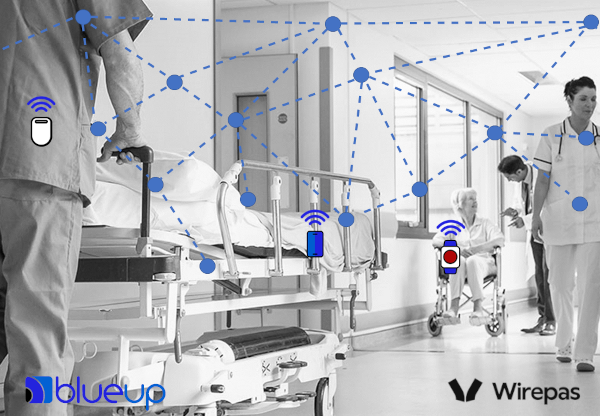
MeshCube is a unique solution on the market, with a completely wireless infrastructure based on a communication network in Wirepas Mesh 2.4GHz technology. With this technology all design, installation and wiring costs are reduced to almost zero, which makes it extremely economical and suitable for healthcare applications concerning automatic inventory, asset tracking, distributed monitoring via sensors.
LocateBLE allows the localization of assets and people in real time through algorithms based on RSSI (Received Signal Strength Indicator) and trilateration. The rewarding feature of LocateBLE is its independence from hardware: the platform, in fact, is designed to be compatible with multiple types of Bluetooth® LE antennas on the market: Bluetooth® LE beacon gateway, WiFi access point with Bluetooth® LE interface, Zigbee or mesh modules with support Bluetooth® LE extension. This flexibility makes LocateBLE suitable for a wide range of Real-Time Asset Tracking applications in the healthcare sector.
